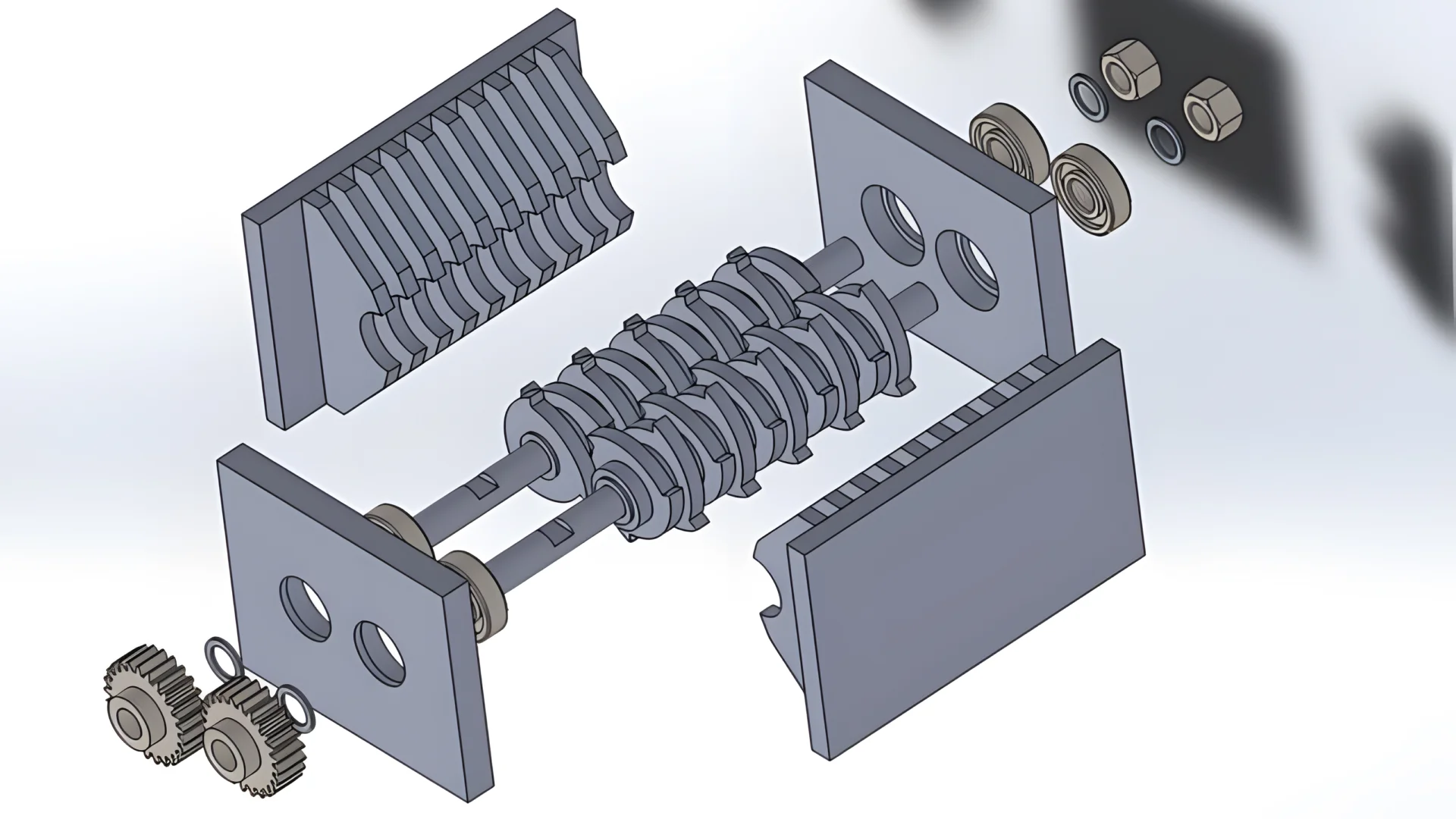분쇄기 blades, as wear parts, need periodic replacement. Given their cost, manufacturers recommend purchasing a spare set of blades with the shredder equipment for an economical and practical solution. When blades need replacing, simply swap them out, recondition the worn blades with wear-resistant welding, and sharpen them with a blade grinder. This cycle of use not only saves money but also ensures the shredder operates without delay—a true win-win.
How to Determine if Shredder Blades Need Sharpening and Maintenance
Sharpen your blades promptly if you notice the following:
1. The blade quality no longer meets standards.
2. Increased energy consumption of the machine.
3. Visible fractures or breaks on the edges of the cut material.
4. Alloy blade edge wear reaches 0.2mm.
Steps for Replacing Shredder Blades
1. Dismantle the shredding box and place it on a stable, flat surface.
2. Remove the seal ring of the blade box and dismantle the entire blade shaft. Due to its weight, secure it with lifting straps and use a crane or forklift for removal.
3. At the other end of the shaft fitted with the pulley, remove the snap ring with a light tap using a hammer and chisel.
4. Once the snap ring is off, dismantle the blades one by one. If a blade is stuck to the shaft, use a hammer with a wooden pad for gentle tapping. If it remains immovable, employ a puller to disassemble it. Replace any damaged blades and reassemble.
Key Points to Remember When Replacing Shredder Blades
Shredder blades come in various specifications for single-shaft crushers, including slicer blades, crusher blades, tearing blades, and four-cornered blades. During blade movement, installation, and removal:
1. Carefully protect the alloy tips to prevent damage.
2. Regularly check the radial runout and swing of the main shaft to ensure proper blade alignment.
3. Clean the main shaft and flange before installation; the flange surface should be flat, clean, and perpendicular to the shaft.
4. Use the largest possible flange to stabilize blade operation, ideally one-third (or half for thin blades) the diameter of the blade for optimal cutting.
5. After installation, allow the blades to rotate freely for 30 seconds to ensure everything functions normally before beginning operations.
6. Ensure the flange nuts are tightened appropriately to prevent the blade from slipping or causing internal damage during operation.
7. Operators must wear protective gear (safety glasses, dust masks, helmets, and gloves) and ensure the protective guard of the saw machine is intact.

How to Replace and Maintain Blades in Dual-Shaft Shredders
Dual-shaft shredders endure material impacts and wear due to friction. Over time, the blades wear down, changing shape from sharp angles to rounded edges, signaling the need for replacement to maintain production standards. Key maintenance tips include:
1. Careful Disassembly: Protect the alloy tips during disassembly to prevent costly damage.
2. Routine Checks: Regularly inspect blade alignment and adjust as necessary to avoid further damage.
3. Mandatory Idling: After installation and inspection, idle the blades for thirty seconds. If no abnormalities are detected, proceed with normal operations.
Maintenance and Replacement of Metal Shredder Components
Efficient operation of metal shredders requires not only knowledge of operating techniques but also proper maintenance. Here are some tips:
1. Screen Repair and Replacement: Screens made from perforated thin steel or sheet metal should be repaired with rivets or soldering if slightly damaged; if extensively damaged, replace them entirely.
2. Bearing Lubrication and Replacement: Clean bearings every 300 hours. If lubricated with machine oil, fill the bearing housing one-third full, not exceeding half. Check and replace worn or damaged bearings promptly.
3. Replacement of Teeth and Hammers: Replace worn crushing teeth and hammers timely to maintain crushing efficiency and quality. Ensure rotor balance by replacing teeth in sets and performing a balance test post-replacement.
결론
Recognizing when blades become less effective or when output suddenly changes is crucial. Adjusting the shredder blade speed appropriately for different materials, such as increasing for plastics and wood or decreasing for tangled materials like woven bags and old cables, optimizes shredding efficiency and prolongs blade life. Regular maintenance and timely blade replacement are essential to prevent unexpected downtimes and maintain optimal shredder performance.



